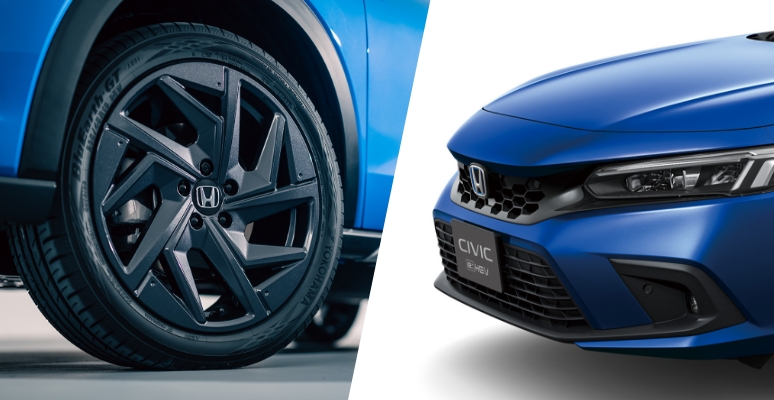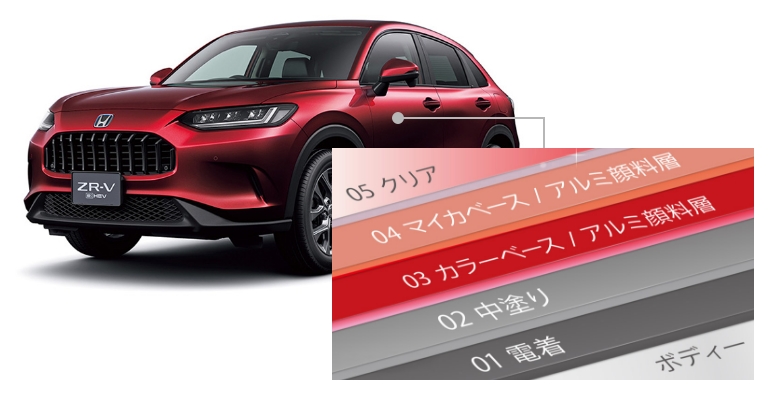Material Research
Center
Innovating with revolutionary materials to create a future filled with hopes and dreams
The Material Research Center continues to work towards creating an innovative material technology beyond the boundaries of business fields, to create Honda’s vision, the “joy and freedom of mobility”, and to realize mobility, which expands all possibilities.

Environmental technologies for realizing sustainable living
Honda aims to achieve a “zero environmental impact society” throughout the lifecycle, including corporate activities, to ensure sustainable living for people on this planet. At the Material Research Center, specific initiatives include research and development in areas such as “circular and environmentally friendly materials”, “manufacturing processes”, as well as “Life Cycle Assessment (LCA)” and “innovative material design” using digital technologies.

The initiative on organic materials
Since the 1990s, Honda has been incorporating recycled resin materials in their products from 100% of their own collected bumpers. This material is not limited to bumpers, but its application has been expanding to other plastic products such as grills, interior components, motorcycles, and more. In pursuit of zero environmental impact, Honda is advancing research and development on recycled materials from end-of-life vehicles as well as plant-derived materials.
Recycling technology for resin bumpers Recycling technology forresin bumpers

Initiatives on metallic materials
In a circular economy, it is necessary to return recycled materials into products such as automobiles. Research and development is being conducted concerning dismantling methods and sorting technologies in order to avoid contamination of metal scrap materials. Furthermore, research and development are underway for the neutralization of Impurities as well as upgrading technology in order to ensure performance and quality, even if impurities are mixed into metal scrap materials.
Technology for the use of metal scraps Technology for the use ofmetal scraps

Initiatives in chemical materials
Efforts are underway in the research and development of materials that cure at low energy, and innovative manufacturing processes to reduce CO2 emissions during the curing process of adhesives and coating materials in product manufacturing. Additionally, research and development are progressing on adhesives and paints using recycled materials and plant-derived materials, aiming to achieve a circular economy.
Reduction of environmental impact ofstructural materials Reduction of environmental impact of
structural materials Reduction of environmental impact
during manufacturing Reduction of environmental impact
during manufacturing

Initiatives in LCA/digital technologies
The method of quantitatively assessing the environmental impact throughout the entire lifecycle, from raw material extraction and material procurement to disposal and recycling, of the products and services provided is called Life Cycle Assessment (LCA). The Material Research Center significantly contributes to Honda’s LCA by building a basic unit database for product constituent materials through the use of digital technology. Furthermore, by accumulating performance, structure, and process data related to materials and using Artificial Intelligence (AI) for material optimization technology, we aim to promptly apply resource-circulating innovative materials to Honda products.



